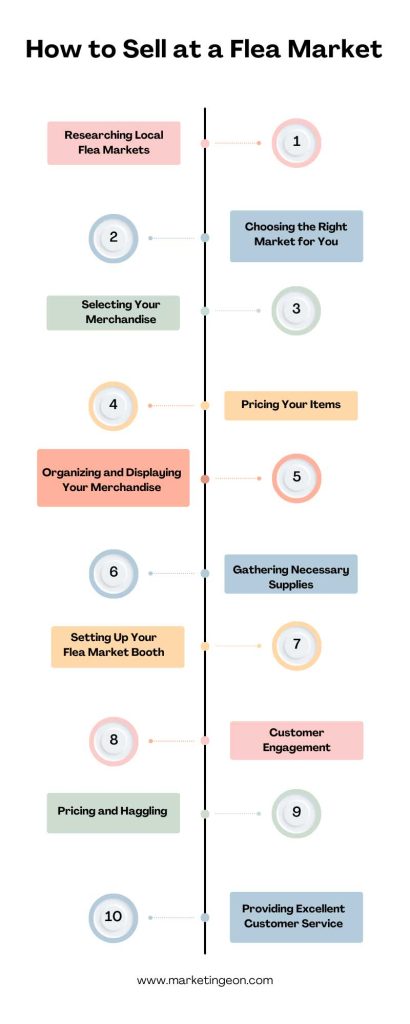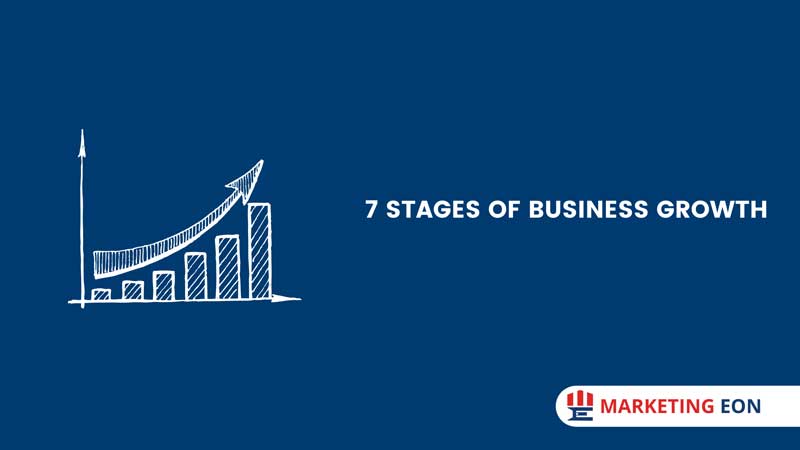Selling at a flea market can be rewarding for you and more profitable than other businesses. Do you know how to sell at a flea market?
If not, don’t worry. I will share the total process today so that you can start selling your products at a flea market in no time. Moreover, you will be a master of selling at flea markets after reading this guideline.
What is a Flea Market?
Flea markets are bustling open-air or indoor markets where vendors gather to sell various secondhand, handmade, and unique items. These markets offer a rich blend of antiques, collectables, vintage clothing, handmade crafts, electronics, furniture, and fresh produce. They are known for their lively atmosphere, with buyers and sellers haggling over prices, sharing stories, and discovering hidden treasures.
How to sell at a flea market
1. Researching Local Flea Markets
Before you dive into selling at a flea market, it’s essential to research the local market scene. Find out which flea markets operate in your area, their schedules, and the types of vendors they attract. You’ll also want to learn about booth rental costs, market rules, and any specific seller guidelines.
2. Choosing the Right Market for You
Once you have a list of local flea markets, consider which one aligns best with your merchandise and goals. Some flea markets specialize in specific niches, such as vintage items or handcrafted goods, while others cater to a broad range of vendors. Choosing the right market can significantly impact your success as a seller. So, it is one of the crucial facts of knowing how to sell at a flea market.
3. Selecting Your Merchandise
Deciding what to sell at a flea market is a crucial step. Take inventory of items you no longer need or use. Vintage items, collectables, clothing, home decor, and handmade crafts are all popular choices. Remember that variety can attract a broader range of customers, so consider diversifying your merchandise.
4. Pricing Your Items
Determining fair and competitive prices for your items is vital. Research similar products online and visit other flea markets to gauge pricing trends. Be open to negotiation, as haggling is part of the flea market culture.
5. Organizing and Displaying Your Merchandise
Effective organization and display of your merchandise can make or break your flea market booth. Categorize items, use tables, shelves, and racks to create an appealing layout, and consider using creative signage and props to catch shoppers’ attention.

6. Gathering Necessary Supplies
As you prepare for your first flea market, make sure you have all the necessary supplies in place. These may include tables, clothing racks, display stands, pricing stickers, bags, cash boxes, and promotional materials.
7. Setting Up Your Flea Market Booth
Arriving early to the flea market is essential. This gives you ample time to set up your booth, make any last-minute adjustments, and be fully prepared when the customers start pouring in.
8. Customer Engagement
Engage with customers by offering a friendly greeting and being approachable. Be ready to answer questions about your merchandise, share stories about unique items, and offer assistance when needed.
9. Pricing and Haggling
Be prepared for haggling. It’s a common practice at flea markets. Set your initial prices slightly higher than your target price to leave room for negotiation. Be flexible and open to customer offers, but also know your bottom line.
10. Providing Excellent Customer Service
Offering excellent customer service can distinguish among vendors. Be attentive, patient, and courteous. Provide information about your products and offer packaging solutions for your customers.
The success formula for how to sell at a flea market
1. Marketing Your Booth
Promote your flea market booth before the event. Use social media, online classifieds, and word-of-mouth to let potential customers know what you’ll be selling and where you’ll be in the market.
2. Handling Transactions
Prepare for various payment methods, including cash, credit cards, and mobile payment options like PayPal or Square. Keep your cash and transactions organized and secure.
3. Keeping Track of Inventory
Maintain a record of your inventory and sales to stay organized. This will help you track your best-selling items and calculate your profit.
4. Adapting to Market Conditions
Flea markets can be affected by various factors, such as weather, time of year, and local events. Be adaptable and ready to adjust your booth, pricing, and strategy to maximize your success under different conditions.
Legal and Ethical Considerations
1. Vendor Permits and Licenses
Research and acquire any necessary permits and licenses to legally sell at flea markets. Requirements vary by location, so check with local authorities to ensure compliance.
2. Sales Tax and Reporting Income
Understand your tax obligations, including sales tax. Keep accurate records of your sales, expenses, and income, and consult with a tax professional to handle your financial reporting properly.
3. Ethical Practices
Maintain ethical business practices in your flea market venture. Be honest about your products, accurately represent their condition, and respectfully treat customers and fellow vendors.
Conclusion
Selling at a flea market can be a fun and profitable venture. With careful planning, organization, and a customer-focused approach, you can master the art of flea market selling. Whether you want to declutter your home, start a side business, or connect with your local community, the flea market world offers many opportunities. So, embrace the adventure and embark on your flea market journey today by learning how to sell at a flea market.
You may also read: 20 Boring Business Ideas That Can Make You Rich






